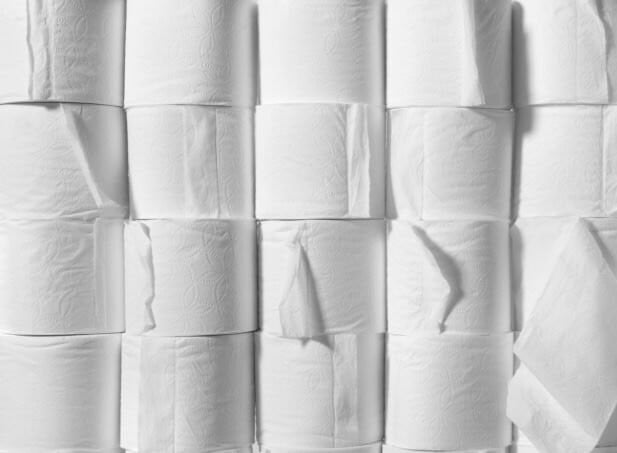New Zealand is a country internationally recognised for producing high quality food across a variety of sectors including meat, dairy, and fruit sectors. Our high quality food products are backed up by world leading food safety standards and laws to ensure we supply safe food to local and international consumers.
It is particularly important for those in food production to analyse products that have direct food contact, to ensure they are food safe and carry no risk of transmitting foodborne illness. One key product that is often overlooked and has a lot of direct food contact is disposable gloves.
Fortunately, there are plenty of options to choose from, including vinyl gloves, latex gloves, polyethylene gloves, and nitrile gloves. In this article, we explore each type of food-grade glove and its key characteristics. This way, you can keep your customers safe and happy, while also streamlining your operations.
Shop our range of disposable gloves ›
Best gloves for food
Each type of glove will suit different businesses, foods, and processes. Whatever food your business serves or prepares, you’ll find a suitable choice among the following options:
Vinyl gloves
Made of polyvinyl chloride (PVC), vinyl is one of the most popular disposable options for short-term, low-risk tasks. They are commonly used for food preparation and serving, cleaning, restaurants, and light industrial workplaces. Vinyl gloves have very little stretch and are prone to puncturing, making them most useful in food service as a cost effective alternative to nitrile or latex.
Pros of vinyl gloves:
- Latex free
- Cost-effective
Cons of vinyl gloves:
- Not resistant to chemicals
- Loose fitting
- Susceptible to punctures
- Not biodegradable
Latex gloves
Latex has progressively decreased in overall consumption in the past 10 years, as allergen free, synthetic alternatives like nitrile have been on the rise. Latex protects against contamination and is extremely dextrous making it the glove of choice for highly tactile tasks. It is prone to puncturing (which has led to the development of costly alternatives like double thick latex gloves) but provides the best protection for tasks that require fine motor skills.
Pros of latex gloves:
- Natural and biodegradable
- Highly dextrous and stretchy
- Comfortable fit
Cons of latex gloves:
- More expensive than vinyl
- Less resistant to chemicals
- Can cause allergic reactions
For workers doing the same task repeatedly, latex is a safe option. However, as soon as they begin handling another type of food, they should change their gloves to avoid cross-contamination.
Latex allergies
Unfortunately, there is a high risk of allergic responses to latex. The natural proteins found in natural rubber latex can cause mild to severe reactions with symptoms such as skin irritation, hives, difficulty breathing, and anaphylaxis. People at high risk should use latex-free gloves, such as nitrile or vinyl alternatives.
Nitrile gloves
Nitrile butadiene rubber is a synthetic, latex-free rubber. It has similar characteristics to latex but does not contain the latex proteins people can be highly sensitive or allergic to. Nitrile is often used for food handling, cosmetics, workshops, garages, heavy industrial environments, meat processing, and animal handling.
Nitrile demand has sky-rocketed in recent years due to its synthetic properties making it possible to create different nitrile variations for different applications. For example metal detectable nitriles for the food industry, or bright orange grippy nitriles for mechanics.
Pros of nitrile gloves:
- Strong and flexible
- Suitable for extended use
- Resistant to punctures
- Comfortable fit
- Resistant to some chemicals
Cons of nitrile gloves:
- No internationally recognised biodegradable option available
- More expensive than latex
- Less tactile
Nitrile gloves NZ
At Primepac, our nitrile gloves are available in different colours which allow for different colours to be used in different production zones. For example, we stock black nitrile, blue nitrile, and bright orange nitrile.
Polyethylene gloves
Polyethylene is a thin, flexible material commonly called PE. It is inexpensive and ideal when frequent glove changes are required, such as when making sandwiches or serving food from a deli case.
Pros of PE gloves:
- Latex free
- Cost-effective
- Bright colours for visibility
Cons of PE gloves:
- Not resistant to chemicals
- Prone to punctures
- Loose fit
Food safety guidelines for disposable gloves
No matter which type of disposable gloves you have, the following six rules must be followed at all times:
1. Wash your hands thoroughly
Before and after putting on gloves, you should always wash your hands for 20 seconds with soap and warm water. Afterwards, completely dry your hands with a paper towel.
2. Change gloves frequently
It is good practice to change gloves between each task, especially after handling raw meat, poultry, or seafood. Remove the used pair inside out and place them in the bin.
3. Do not reuse gloves
Disposable gloves are designed for single use so do not put them back on for a second task. If not, they can harbour bacteria and contaminate the food you prepare next.
4. Do not use damaged gloves
As soon as your gloves are torn or punctured, remove them, wash your hands, and put a fresh pair on. Holes may allow bacteria to contaminate both your hands and the food.
5. Avoid touching your face or other surfaces
The only things that should come into contact with food are clean equipment and your gloved hands. Any contact with your hair, clothing or other surfaces could allow harmful bacteria to spread onto the food.
6. Keep gloves clean and dry
To prevent moisture and unwanted bacteria from infecting the food, gloves should be kept clean and dry – including when stored. For best results, store them in a sealed container away from potential pollutants.
These precautions help to reduce the risk of cross-contamination from other foods or the surrounding environment. Failing to do so can cause the barrier to lose its effectiveness.
Disposable gloves NZ
To keep your business stocked up and running smoothly, the team at Primepac has a wide range of disposable gloves. We place a strong emphasis on hygiene and sanitation. We also know that each business has unique protocols to meet, which is why we provide several options:
We stock other work gloves, including knitted gloves, leather gloves, and chemical-resistant gloves. We also have a range of blade cut gloves that are suitable for the food industry.
For more advice and information about food safety and disposable products, reach out to the friendly team at Primepac. We can help you choose a suitable solution for your team, as well as other supplies for health and safety, catering, and cleaning.

%202.png?width=800&height=600&name=Primepac%20Nitrile%20Gloves%20Blog%20%26%20Email%20(1)%202.png)
.png?width=313&height=277&name=Blue%20Vinyl%20Gloves%20(1).png)


.jpeg?width=335&height=335&name=PE%20gloves%20(1).jpeg)




.png)

